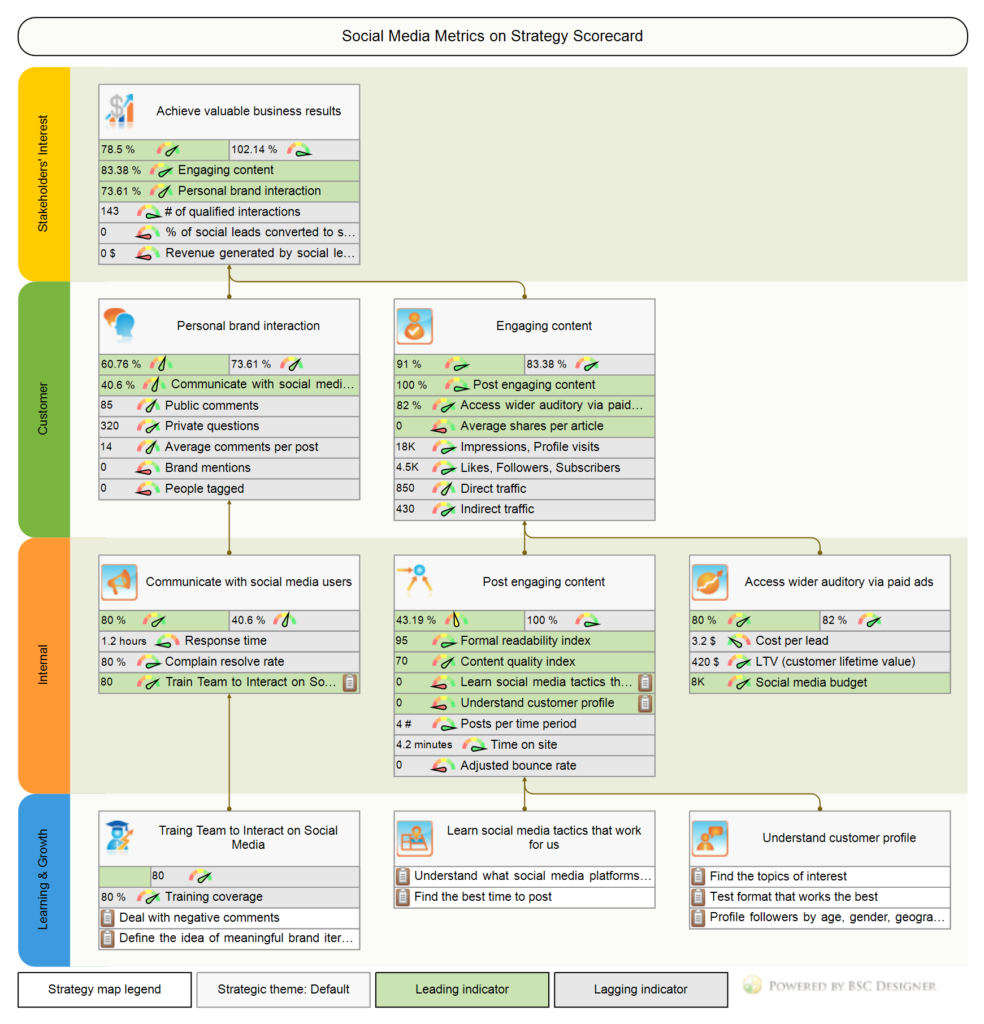
If you're interested in using content marketing to grow your business, you need to develop a strategy for achieving your goals. A content calendar, KPIs, and goals should be set to guide content marketing. These steps will help determine who you want your content to reach, what you should deliver, and how you can measure success. Once you have these steps you can plan the steps you need to take to get there.
A content marketing strategy
The key to content marketing success is creating an editorial calendar and regularly scheduling content. It involves planning out the content that will appeal most to your audience, identifying them, and writing every piece of content. A key component of any successful marketing strategy is consistency. Consistency is key to a successful marketing strategy. Having enough content available for publication on a regular schedule will allow you to maintain a steady stream. It is also important to consider your audience's life cycle and stage, as well as the different devices they use to consume it.
Set SMART goals
Setting SMART goals is crucial when planning your content marketing strategy. As a rule, your SMART goals must be specific, measurable. Realistic, achievable and time-bound. This framework will help to track your progress and measure the success of your efforts. It's important that you set achievable goals and challenges people. You should also make sure that they are time-bound in order to stay on track.

Definition of KPIs
Metrics are essential for any content marketing strategy. Page views are a simple metric that you can use to track your progress. You can also segment traffic by channel to determine which channel is driving the most traffic. This will allow you to see exactly what your efforts are yielding results. To understand the effectiveness of content marketing, you need to go beyond page views.
Create a content calendar
It is essential to create a content calendar that your business uses for consistent and high-quality content. This can help you identify topics and trends that are most popular. It can also help you plan out how to publish your content and repurpose it across multiple channels. A content calendar can make it easier to manage your content production. It can also help you identify gaps in your content marketing strategy and alert you to great copy in advance. It's also an effective way to track your content output and identify opportunities for collaboration.
Attracting new members
An effective content marketing strategy will help you attract audience members to your website and ultimately boost your sales. There are many types of content marketing. These include articles, videos, and photos. Your strategy will determine which types of content are most beneficial to your business and which won't. It is also possible to define your content distribution channels, goals and objectives. Your content should appeal to your target audience. We'll be discussing the benefits of using content marketing in the paragraphs below.

FAQ
What is the difference of content marketing and content production?
Content marketing refers to the idea that great brands all have the same message. They deliver valuable information that people desire and need.
Content marketers are trained to create the right content at each time and for every channel.
They also understand how to develop an effective strategy around promotion and distribution.
They think strategically about their actions and the reasons they do them.
This is the core skill set needed to be a successful content marketer.
How to Use Blogging To Generate Leads For Your Business
Leading B2B companies know how important online leads are for their success. Many businesses fail to convert qualified traffic despite this fact. So if you are wondering why this happens, here are five reasons you may not have been generating effective leads.
Reason 1 - You Aren’t Optimizing Your Website. Even if You have a Blog, You aren’t Making Money. Blogging is a great way for new customers to be attracted. However, blogs that don't help your target audience solve their problems will not make you money.
To ensure your blog is profitable, optimize it by ensuring it meets search engine guidelines and uses keywords people are searching for. This improves the likelihood that visitors will find your blog post.
After they find your blog article, make sure that you offer value by answering their queries and providing solutions as soon as possible.
Keyword Toolbox is a great tool for finding keywords. Then, add those words to your page title, meta description, body text, and more.
CTAs should also be placed throughout your blog. CTAs are a way to get readers to take specific actions (e.g., sign up for your newsletter or buy a product).
These actions increase the chances of a sale. They also give you an insight into what information users are looking for.
Check out our guide How to Start a Successful Blog.
Reason 2: Your brain doesn't know what to write about. Once you start writing, you will find that the ideas come quickly, but then they stop!
It takes time and effort to establish yourself as an authority in your niche. To do this effectively, you must write about topics that interest your potential clients.
Your goal in writing is to answer "Why should I Hire You?" When writing, keep your focus on solving problems.
This will make you stand out among other businesses who may only be trying to sell products.
Your blog should be useful for your prospects. Your expertise can be used to educate others. You might share information about the latest trends or offer tips on how to save money on home improvement projects.
You can include links to resources so that your viewers can find out more. These resources could be articles written by experts in your field, videos, or podcasts.
Reason 3 - You don’t have clients and you don’t want them. All you need is more sales!
You cannot build a profitable business overnight. It takes time to build trust with your target markets.
But, you don't have to spend hours creating content if it's not something you want to do. Post ads on social media platforms like Facebook or LinkedIn instead.
Make sure your ads are targeted at the ideal client to save money and avoid ineffective advertising. You will likely have many female clients if your website design company is run by a woman.
So, instead of targeting all men, you could target women by location, age group, income level, and more.
After creating your ad, you should follow-up by sending a message directly to your potential customers when you get a click through.
Don't forget that you don’t have to pay per person who visits the site. Accessible traffic can generate more sales than those who pay.
A contest you could hold for new subscribers signing up via email would be one example. You could also offer gifts to subscribers to your mailing list.
The key here is to find creative ways to attract visitors without spending too much money.
Reason 4 - Advertising is costly if you're too busy running your company to devote time to it - but that doesn't mean you should not do it!
You should always prioritize your work over your business. For example, if you are too busy running your company to advertise it then you won't have the ability to grow.
It is possible to feel overwhelmed by the amount of tasks that you have each day. You may not be able to prioritize them properly.
Start by organizing. Spend an hour each week reviewing and organizing what you have to do the rest of your week.
Once you begin, you'll be amazed at how much easier everything will be.
How does Content Marketing Strategy help me?
Content Marketing Strategy allows you to access data that you might not otherwise have. This data can be used to determine which content types perform best.
It helps you identify the strategies you should use to drive more traffic to your site. And it provides insight into your audience's behavior so that you can develop even better content.
This allows you to focus on the good content and less worrying about whether it works.
A Content Marketing Strategy also helps you analyze what messages resonate most with your audience.
By analyzing these messages, you can figure out what content they prefer. You can use the same content to keep your winning ideas going.
A Content Marketing Strategy can help you track the performance of your content. By sharing content, you will be able to easily identify which types of content converts better.
A Content Marketing Strategy, in other words, is key to ensuring that your content performs as expected.
Statistics
- Companies that use content marketing see approximately 30% higher growth rates than businesses not using it. (mailchimp.com)
- Progress indicators (0–100%) allow each team member to see how attainable each goal is and understand what remains to be accomplished. (semrush.com)
- Measure your goals with a progress indicator of 0-100%. Make your goals collaborative and transparent (semrush.com)
- According to research compiled by Coschedule: Companies that publish 16+ blog posts a month get as much as 3.5x as much traffic as those that publish 0-4 posts a month. (criteo.com)
- To further show the importance of this, 89% of people have stopped doing business with a company because of a poor experience. (neilpatel.com)
- Out of the 1,500 marketers we surveyed for our State of Content Marketing report, 78% who felt their content marketing strategy was exceptionally effective in 2021 had documented their strategy. (semrush.com)
- According to the Content Marketing Institute, 70% of B2B marketers and 86% of B2C marketers surveyed use content marketing in some form or other. (criteo.com)
- According to our research, brand awareness, attracting traffic, and generating leads remain the key content marketing goals in 2022. (semrush.com)
External Links
How To
What are some of the best content marketing tools?
Every industry is different, so there's no single platform that will work for everyone. But most industries have at the very least one tool they like to use. Hubspot, for example, has been shown to increase conversion rates by nearly 50%. This is why it is so popular among marketers.
But not all tools are created equal. Some offer better analytics tracking, others allow for easier collaboration between different teams, and others offer features such as A/B testing that may improve your content marketing ROI.
Before you decide on a platform, think about the following: What are their pros and cons? Will it meet my needs now? And what about in 2 Years?
Entrepreneur Magazine has identified the top five content marketing platforms.
Marketo Content Studio #1 Content Marketing Platform
Marketo is a provider of enterprise social media management software. It offers a full range of services and products, including CRM software as well as social publishing tools and dashboards.
The company also offers a content studio, which gives businesses access to pre-made templates and graphics. These can then be modified into customized designs.
This means that you don't need to spend time creating graphics or writing original content. Instead, you can concentrate on creating compelling content that speaks directly for your audience.
Marketo makes it easy for you to upload videos and images to your blog posts. This helps make them visually appealing and increases engagement with your readers.
Marketo requires that you upload your files to Marketo in order to edit them.
Trello: Content Marketing Platform#2
Trello works in the same way as Kanban boards when it comes to project management. Both have task lists on which users can assign tasks and monitor progress.
Trello lets you set up boards for each person on your team and assign specific responsibilities. It facilitates information sharing among employees.
Trello, however, doesn't need any special software to work. You can use Trello on any device.
Trello also allows you to invite people to collaborate without sharing any sensitive data.
This means that you can create a private Board and share only the most important details with those who need it to complete a task.
Google Suite 3: Content Marketing Platform
Google offers a variety of products specifically designed for business owners. The company's G Suite includes Google Docs, Sheets, Slides, and more.
It's important to note that these applications aren't free. You will need to pay for each user individually. If you intend to use them multiple times, there are many plans that start at $5 per monthly.
You would need two licenses if you wanted to create a document or embed a link from another site.
You can create one document for free if you only need it.
Google tools are compatible with Gmail and other apps, which is a major advantage. Google tools allow you to easily email documents and save data in Google Drive.
Hubspot Content Management Platform 4
HubSpot is a popular web-based tool for marketing that provides a wide range of functions.
It allows users to manage many aspects of their blogs, landing pages and websites through the platform. You can use the platform to create automated emails or track conversions.
HubSpot can also be integrated with Salesforce or WordPress so you can connect to all three.
HubSpot's integration with over 200 third-party apps is one of the best features. This allows you to automate your processes and generate reports based off real-time information.
While you won't be able to publish content directly from HubSpot, you can export it into many formats, including HTML, PDF, and Word.
HubSpot provides a free trial version for pricing. HubSpot offers a free trial version. However, you can upgrade to a paid account to gain unlimited access.
HubSpot has everything you need, whether you're looking for an eCommerce platform or a blog platform.